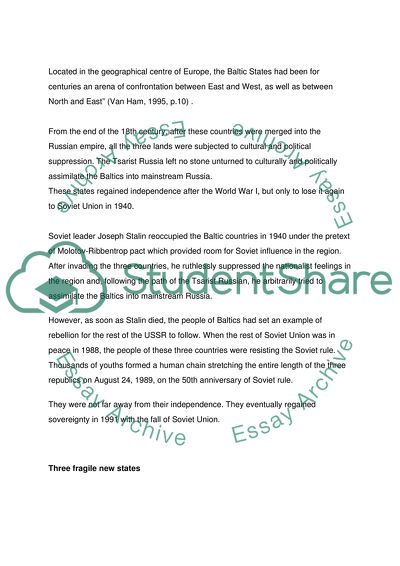Cite this document
(Baltic States Membership in the WEU and NATO Essay - 1, n.d.)
Baltic States Membership in the WEU and NATO Essay - 1. Retrieved from https://studentshare.org/politics/1749747-critically-evaluate-the-external-role-and-influence-of-relevant-international-governmental-organisations-in-processes-of-state-and-nation-building-in-the-baltic-states-during-1991-2004
Baltic States Membership in the WEU and NATO Essay - 1. Retrieved from https://studentshare.org/politics/1749747-critically-evaluate-the-external-role-and-influence-of-relevant-international-governmental-organisations-in-processes-of-state-and-nation-building-in-the-baltic-states-during-1991-2004
(Baltic States Membership in the WEU and NATO Essay - 1)
Baltic States Membership in the WEU and NATO Essay - 1. https://studentshare.org/politics/1749747-critically-evaluate-the-external-role-and-influence-of-relevant-international-governmental-organisations-in-processes-of-state-and-nation-building-in-the-baltic-states-during-1991-2004.
Baltic States Membership in the WEU and NATO Essay - 1. https://studentshare.org/politics/1749747-critically-evaluate-the-external-role-and-influence-of-relevant-international-governmental-organisations-in-processes-of-state-and-nation-building-in-the-baltic-states-during-1991-2004.
“Baltic States Membership in the WEU and NATO Essay - 1”, n.d. https://studentshare.org/politics/1749747-critically-evaluate-the-external-role-and-influence-of-relevant-international-governmental-organisations-in-processes-of-state-and-nation-building-in-the-baltic-states-during-1991-2004.


